On Jan. 16, 2009, members of the Wyeth clan gathered at the Brandywine River Museum to mourn the death of Andrew Wyeth at the age of 91. On the same day six years later, they convened to celebrate the opening of a major, six-decade retrospective of his son, Jamie Wyeth.
“Jamie Wyeth,” an exhibition that comes to Chadds Ford from the Museum of Fine Arts, Boston, includes more than 100 diverse works in what the artist terms “combined mediums.” They run the gamut from childhood sketches to recent paintings and from book illustrations to “tableaux vivants,” detailed miniature scenes that served as models.
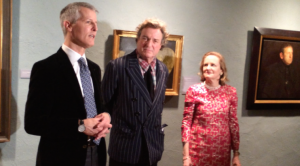
In Boston, the show broke attendance records, and if the overflow parking at the museum on Friday night was any indication, it may do the same here before its run ends on April 5.
"We are thrilled to present the largest and most comprehensive survey of Jamie Wyeth's art ever to be assembled," said Thomas Padon, director of the Brandywine River Museum of Art. "Jamie Wyeth's paintings find special resonance here - in the galleries amidst our collection of paintings by his highly talented family and in the location of his childhood home, his first studio and his most consistent muse, the Brandywine Valley.”
Born into a family of renowned artists, including his father; his grandfather, N.C. Wyeth; and his aunt, Carolyn Wyeth; Jamie Wyeth was home-schooled after sixth grade, receiving art tutelage from his aunt, who used the late N.C. Wyeth’s studio in Chadds Ford.
“That studio has always had an amazing effect on me,” said Jamie Wyeth as he toured the Brandywine exhibit for the first time. He said he enjoyed spending time among his grandfather’s swashbuckling illustrations and costumes, which were on display throughout the studio. “I’d go back to my home and my father would be painting a dead bird,” he said, wryly explaining his preference at the time.
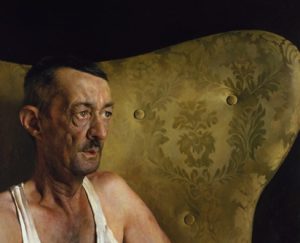
The show, which starts chronologically, features Wyeth drawings as a 5-year-old that illustrate his grandfather’s influence. In one, a knight strains to reach his lady in a tower. On an adjacent wall, the 1963 “Portrait of Shorty” elicits a common response from spectators: “Do you believe he was only 17 when he did this?” Wyeth said he found the subject living in a shack and had to do some convincing to get him to pose.
In contrast, when a Wyeth representative approached Elliot Bostwick Davis from the Museum of Fine Arts, Boston, in early 2009 about a possible show - a standard practice in the art world - she didn’t need much persuasion. In fact, she suggested expanding its scope to a retrospective.
“When I found out that his mother, Betsy, had kept 1,100 of his childhood drawings, that was exceptional,” Davis said. “That kind of thing just doesn’t happen.”
Davis, who attended the Brandywine River Museum's members’ preview on Friday night, said she felt that a retrospective would serve a dual purpose: spotlighting Wyeth’s impressive career as well as illuminating the evolution of the creative process. “It looks fantastic here,” she said as she surveyed the Brandywine’s installation.
She explained that the exhibit, which was organized in Boston, would travel to two additional venues: the San Antonio Museum of Art (April 26-July 5) and the Crystal Bridges Museum of Art in Arkansas (July 23-October 4). In each locale, Davis said the curators would offer their own “fresh take” on the material, as the Brandywine’s Amanda C. Burdan has done.

Burdan said the Chadds Ford exhibit features five works that did not appear in Boston, and the sequence of the display also differs. For the first time in recent memory at the Brandywine, the show could not be accommodated on a single floor. It starts on the second floor and spills over into the third.
In its entirety, viewers will experience Wyeth’s art dating back to the age of 3. The exhibit boasts numerous, familiar depictions of the landscapes and wildlife of the Brandywine Valley and coastal Maine, both established Wyeth enclaves, and portraits of Phyllis Wyeth, his wife of 46 years. But it also includes examples of some of Jamie Wyeth’s more unconventional, far-flung experiences.
Images inspired by his participation in NASA's "Eyewitness to Space" program in the late ‘60s are showcased as well as paintings made during the ‘70s, when he lived in New York at Andy Warhol’s Factory and studied anatomy with a hand doctor - a stint that led to working at the New York City morgue.
Examples of the work he did as a court artist, chronicling the Watergate hearings in 1974, appear in the same room as his 1967 “Portrait of John F. Kennedy,” an oil on canvas now owned by the Museum of Fine Arts, Boston. They draw viewers into a series of paintings depicting Warhol – “He thought I was peculiar … more strange than he was,” Wyeth said – as well as portraits of ballet star Rudolf Nureyev. “I met him and was fascinated by him,” Wyeth said.
Asked to identify his favorite paintings, Wyeth, a youthful 68, grimaced. “I’m horrified seeing my early work,” he said. “It doesn’t interest me at all.” His favorite painting? “The one I’m working on,” he said.
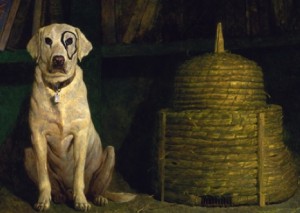
But his face brightened when he fielded questions about individual works, many of which prompted animated stories. He said “Kleberg,” a 1984 painting of a dog his wife inherited from Robert Kleberg of the legendary King Ranch in Texas, came about after the dog got too close to Wyeth’s paints.
On an impulse, Wyeth said he painted a ring around one of the dog’s eyes. He said he liked the effect, reminiscent of Petey, the dog from the “Our Gang” children’s films, and he continued to touch up the eye with paint before graduating to hair dye.
Wyeth said one series of paintings done on Monhegan Island, where he purchased the former home of Rockwell Kent, an artist he greatly admired, came from a dream he had shortly after his father died. “I don’t dream that much. It was so real ... Why not paint it?” he said, noting with amusement that one of the paintings is now owned by horror novelist Stephen King.
In one of the works, Andrew Wyeth, N.C. Wyeth, Winslow Homer, and Andy Warhol appear on the rocks at the sea’s edge during a storm. A later version shows only the two Wyeths and provides an example of the kind of revision and elimination process Wyeth learned from his father, who once suggested that one of his most famous paintings, “Christina’s World,” would be better without Christina.
Another dramatic revision occurred with “Draft Age,” a 1965 portrait of Jimmy Lynch. In the first watercolor study, Lynch, a neighbor described by Wyeth as “like a brother to me,” wears military garb. In the final oil painting, juxtaposed with the original study, aviator goggles have given way to wraparound sunglasses and a defiant pose viewed as emblematic of the era. Wyeth pointed out that appearances could be deceptive: Lynch “ended up being rejected by the military.”
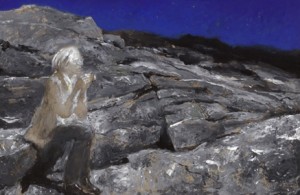
Not all of Jamie Wyeth’s subjects embraced the results of his portraiture. The response to a 1963 portrait of Helen B. Taussig, the pioneering chief of the children’s cardiology clinic at Johns Hopkins Hospital? “How could you be so cruel?” Taussig hid the painting in her attic, Wyeth said.
He explained that he had focused on her intensity rather than the Betty Crocker image depicted in a photograph of her that hangs below the painting. “She has a stethoscope, and she was deaf,” Wyeth said, “that’s how fake” the image was. He said the painting now hangs in the office of a Hopkins vice dean.
Along the way, Wyeth said some of his works suffered from his interest in trying to get the paint to dry faster. “I put them in the oven and they burned,” he said. At other times, such as when he was working on “Portrait of Lady,” a hefty sheep, he sought the opposite effect. He said someone suggested that oil of clove would slow the drying process. He said it worked too well, estimating that it took a decade for the thickly applied oils of Lady’s furry coat to dry completely.
Wyeth said he’s driven to pursue his art. “I wouldn’t call it enjoyable; I find painting difficult,” he said. “It’s more of an obsessive thing.” As an example, he referenced the frame of “Sea Star,” a 1985 seascape. He said the work is not shown much because the owner fears damage to the delicate composition of the frame.
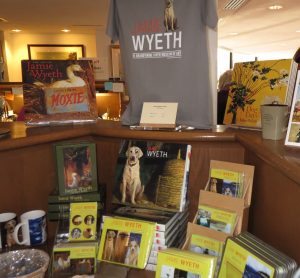
He explained that he constructed the frame from shells he collected, noting that the solitude of island life is conducive to that kind of fixation. “My farm is as much an island as Maine,” he said.
Wyeth divides his time among residences on Monhegan and Southern Islands in Maine and Point Lookout Farm in the Brandywine Valley. The familiar surroundings of the Brandywine River Museum represent a homecoming, he acknowledged, but one with some otherworldly overtones. “There are an awful lot of ghosts,” he said. “Brandywine is like the House of Seven Gables with so many ghosts running around.”
Asked how he thought his father would react to the expansive exhibit, Wyeth said he couldn’t hazard a guess. But he was reminded of his father’s last words to him before he died: “Give ‘em hell.”
The Brandywine Conservancy & Museum of Art, located on Route 1 in Chadds Ford, is open daily (except Christmas) from 9:30 a.m. to 4:30 p.m. Admission is $15, adults; $10 seniors (65+); $6, students with ID and children ages 6-12. Free for children ages 5 and under as well as conservancy members. For more information, visit http://www.brandywinemuseum.org.


 (6 votes, average: 4.17 out of 5)
(6 votes, average: 4.17 out of 5)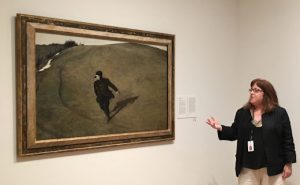
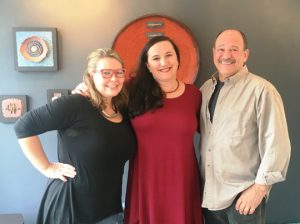
Comments